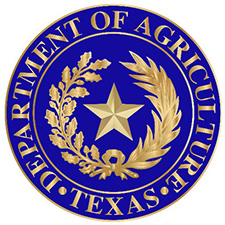Trump administration tried to influence state response to meatpacking plant outbreaks, documents reveal
Former Agriculture secretary Sonny Perdue and staff at USDA and the Vice President’s office sought to influence how states responded to early outbreaks of Covid-19 in meatpacking plants last spring, a trove of documents reveals.
Rebuffed in court, ethanol makers look to EPA to limit RFS exemptions
The ethanol industry is optimistic the Biden administration will issue far fewer exemptions from the ethanol mandate than the Trump administration did despite a Supreme Court setback. Justices overturned, 6-3, an appellate court ruling that greatly restricted the eligibility of small refineries for “hardship” waivers from complying with the Renewable Fuel Standard.
USDA-FDA bill is blank check for SNAP, says GOP
The government is forecast to spend twice as much on SNAP this fiscal year — $114 billion — as it did before the pandemic, and the lead Republican on the House Appropriations Committee said Democrats wrote a blank check for food-stamp spending in the new fiscal year. Majority-party Democrats, meanwhile, said they wanted to make sure SNAP recipients receive their benefits.
Today’s Quick Hits
Food inflation redux: Persistently high meat prices and an upturn in fresh fruit and vegetable oil prices will combine for a 3-percent increase in food prices this year, the second year in a row that food inflation exceeds the 20-year average of 2.4 percent annually. (USDA)
Another farm subsidy: Iowa’s new carbon-sequestration task force, dominated by the ag industry, might be “just another subsidy scheme” for farmers, said the retiring director of the Leopold Center for Sustainable Agriculture. (Iowa Capital Dispatch)
Heat wave harvesting: With temperatures forecast above 100 degrees in the Pacific Northwest, orchard owners are trying to save as much of the cherry crop as possible, “using canopies, deploying sprinklers and sending out workers in the night to harvest cherries.” (Yakima Herald)
More intense drought: The drought blanketing California is outpacing the intensity of the 2012-16 drought, say state officials, who expect a summer of widespread fires and mandatory water conservation in some regions. (Los Angeles Times)
EU revises CAP: The Common Agricultural Policy — the EU farm program — will be “fairer, greener and more animal friendly” with higher environmental and climate ambitions under an agreement covering the next five years. (Brussels Times)
On The Calendar
Monday
American Peanut Council and American Peanut Shellers Association hold the 25th annual USA Peanut Congress, through Thursday, New Orleans.
USDA releases weekly Crop Progress report, 4 p.m. ET.
Tuesday
President Biden, accompanied by Agriculture Secretary Tom Vilsack, heads to southern Wisconsin to “talk about growing agriculture and rural economies.”
Farm Foundation holds an online forum, “Biologicals in agriculture: Innovation, science and promise,” 10 a.m. ET.
Council for Agricultural Science and Technology holds a webinar, “The role of agricultural science and technology in Climate 21 project implementation,” 1 p.m. ET.
Wednesday
Agriculture Secretary Tom Vilsack speaks in a “fireside chat” at the Future of Food Summit presented online by Forbes and Thrive, 3 p.m. ET. For details about the summit, which begins at 2 p.m. ET
House Agriculture subcommittee hearing, “Supply chain recovery and resilience: Small producers and local agricultural markets,” 10 a.m. ET, 1300 Longworth.
USDA releases annual Acreage and quarterly Grain Stocks reports, noon ET. High commodity prices throughout the spring inspired farmers to plant more corn and soybeans than originally planned, say traders. They expect USDA to report corn plantings of 93.8 million acres, a 3 percent increase, and soybean plantings of 89 million acres, up 2 percent from a March survey. If they are correct, the U.S. corn crop could be a record 15.4 billion bushels and the soybean harvest would be nearly 4.5 billion bushels, also a record. At present, USDA projects the corn crop at 15 billion bushels, the second largest on record, and the soybean crop at 4.4 billion bushels, the third-largest ever.
USDA releases monthly Agricultural Prices report, 3 p.m. ET.
Thursday
House Small Business subcommittee hearing, Disconnected: Rural broadband and the business case for small carriers,” 10 a.m. ET, 2360 Rayburn.
USDA issues U.S. and Canadian Cattle and Sheep, and U.S. and Canadian Hogs reports, 3 p.m. ET.
Sunday
Independence Day. On this day in 1776, the Continental Congress adopted the Declaration of Independence, declaring “[t]hat these united Colonies are, and of Right ought to be Free and Independent States, that they are Absolved from all Allegiance to the British Crown.” The revolution started on April 19, 1775, in fighting between British troops and American militia at Lexington and Concord, Massachusetts. It effectively ended with the surrender of a British army commanded by Lord Charles Cornwallis on Oct. 18, 1781. Nearly two years later, Britain signed the Treaty of Paris and formally recognized the independence of the former colonies, on Sept. 3, 1783.
July 5
Independence Day holiday.











